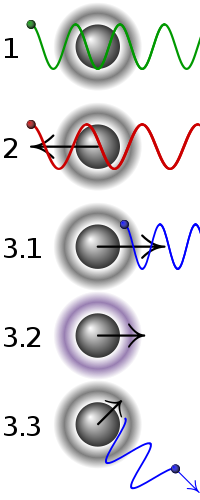
Photo from wikipedia
Anti-Stokes/Stokes Raman peak intensity ratio was used to infer sample temperature, but the influence factors of system correction factors were not clear. Non-contact in-situ anti-Stokes/Stokes temperature calibration was carried out… Click to show full abstract
Anti-Stokes/Stokes Raman peak intensity ratio was used to infer sample temperature, but the influence factors of system correction factors were not clear. Non-contact in-situ anti-Stokes/Stokes temperature calibration was carried out up to 1500 K based on six different samples under two excitation light sources (±50 K within 1000 K, ±100 K above 1000 K), and the system correction factor γ was systematically investigated. The results show that the correction factor γ of anti-Stokes/Stokes thermometry is affected by the wavelength of the excitation light source, Raman mode peak position, temperature measurement region and other factors. The anti-Stokes/Stokes thermometry was applied to the laser-heating diamond anvil cell (LHDAC) experiment to investigate the anharmonic effect of hBN under high temperature and high pressure. It is concluded that the strong anharmonic effect caused by phonon scattering at low pressure gradually changes into the predominance of localized molecular lattice thermal expansion at high pressure.
Journal Title: Chinese Physics B
Year Published: 2023
Link to full text (if available)
Share on Social Media: Sign Up to like & get
recommendations!